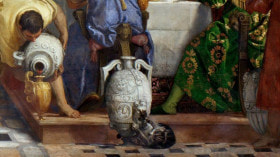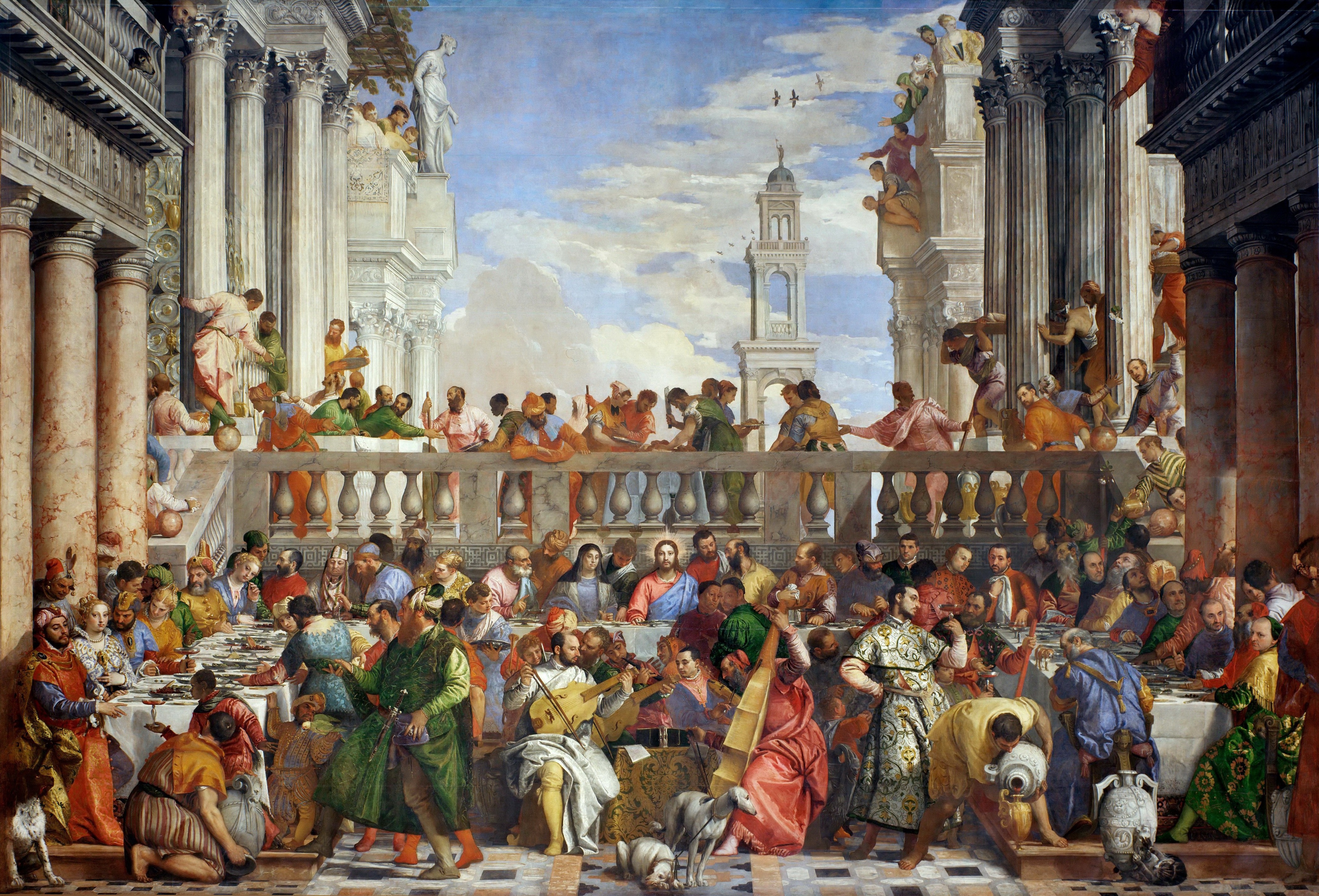|
The Wedding Feast at Cana – Paolo Veronese (1528-88) Paolo Caliari, also known as Paolo Veronese, was an Italian Renaissance painter based in Venice. He is remembered for his large history paintings of mythological and religious stories, of which The Wedding Feast at Cana is one. Painted in the Mannerist style, the artwork was commissioned by the Black Monks of the Order of Saint Benedict in 1562 for their new refectory. Veronese was instructed to paint “the history of the banquet of Christ’s miracle at Cana, in Galilee, creating the number of [human] figures that can be fully accommodated”. The Wedding Feast at Cana depicts the New Testament story of the wedding Jesus, his mother and his disciples attended in the Gospel of John 2:1-11. It is also the scene of Jesus’ first miracle. At the wedding party, the host ran out of wine to serve the guests but Jesus told him to fill the containers with water. Miraculously, the water became wine. Veronese positioned Jesus at the centre of one of the tables, looking out of the painting at the viewer. Either side of him is his mother and disciples, seated in a similar way to paintings of the Last Supper. Yet, Jesus’ party is relatively small in comparison to the number of people at the wedding feast – 123 people in total. Whilst Jesus is, arguably, the most important figure in the painting, Veronese included several famous faces amongst the guests. These include Eleanor of Austria (1498-1558), Francis I of France (1494-1547), Mary I of England (1516-58), Suleiman the Magnificent (1494-1566) and the Holy Roman Emperor Charles V (1500-58).  Spot the Cat: The cat is in the bottom right-hand corner of the painting where it is caught mid-movement, sharpening its claws on a silver amphora. The cat is indifferent to the party and is more concerned with its own comfort. It is not, however, the only animal in the painting. Dotted around the scene are dogs of various sizes and breeds. Only one dog looks in the direction of the cat, but he may be too engrossed in the servant pouring wine into the amphora rather than the cat nearby. One tiny dog can be seen walking on one of the tables. In religious paintings, cats are usually a reference to the devil or sin. Whilst Satan does not play a part in this story, the amphora the cat is playing with is decorated with an image of a Satyr, a symbol of drunkenness and infidelity. Yet, when cats and dogs both feature in a religious painting, there is often an alternative meaning. Dogs are sometimes used to represent Jesus’ disciples, and that is likely the case in The Wedding Feast at Cana. The cat, however, represents one particular disciple, Judas, the one who betrayed Jesus. Dogs are seen as loyal, friendly creatures, hence the connection to the eleven disciples. In this instance, the cat represents treason and disloyalty. To read the full article, click here This blog post was published with the permission of the author, Hazel Stainer. www.hazelstainer.wordpress.com
0 Comments
Your comment will be posted after it is approved.
Leave a Reply. |
©Copyright
We are happy for you to use any material found here, however, please acknowledge the source: www.gantshillurc.co.uk AuthorRev'd Martin Wheadon Archives
June 2024
Categories
All
|

 RSS Feed
RSS Feed